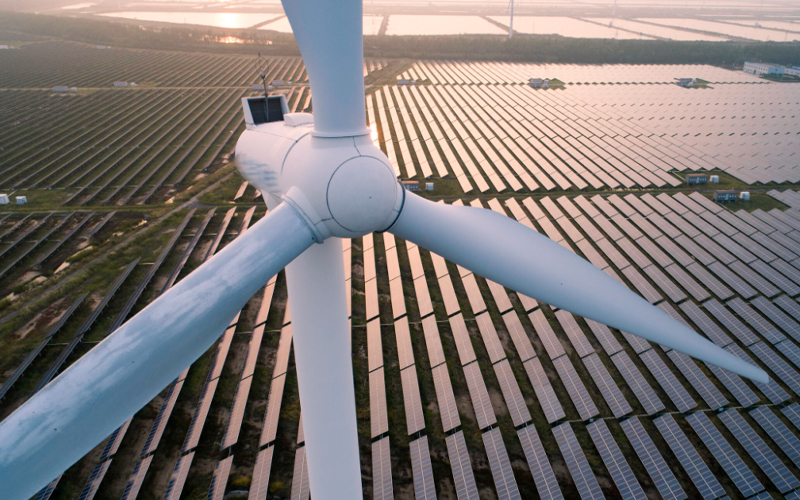There is a myriad of expenses that a business has to incur like employees' salaries, rental for the office space, maintaining the infrastructure, operating costs, energy costs, and more. Businesses employ different methods to reduce various costs. However, not many focus on one factor that can not only save business expenses but also reduce the carbon footprint, which is energy costs.
The demand for electrical energy has increased by leaps and bounds in recent times thanks to our dependence on electricity to run various gadgets and devices. Spiraling energy costs are definitely one area that businesses cannot ignore if they want to reduce their expenses. Besides, excessive use of electricity is detrimental to the environment. Therefore, minimising energy costs is no longer a choice, but a necessity for businesses.
Many businesses, today, have started adopting sustainable practices like replacing bulbs with CFLs or reducing the use of paper, etc. However, there are several other ways of reducing energy costs.
Following are Some Ways to Minimise Energy Costs:
- Audit Energy Usage
- Inculcate an Energy Saving Approach in your Organisation
- Adopt Energy-efficient Practices
- Use Hibernate Mode
- Solar Energy
- Sensor Lights
- Programmable Thermostat
- Invest in Energy-Saving Devices
To optimise energy costs, the first step is to assess the total expenditure on energy and identify the areas where energy usage needs to be curtailed. This can be done by hiring an energy audit company to identify such areas. It is also a good practice to install a smart meter that can track energy usage. A smart meter not only indicates your energy usage but also helps you ensure that you pay for what you use.
Saving energy is only possible if all the members of your organisation understand its importance. You can organise talks/sessions with experts who can educate your employees on the significance of sustainable practices. It is vital that each person in the workplace becomes aware of the impact of their energy usage on the business and on the environment. You can also educate your employees about the energy-saving features in air-conditioners, printers, etc., and insist on their usage.
Most utility companies have specific off and peak times. Encourage your employees to complete tasks that require excessive energy during the low/off periods to reduce energy costs.
Laptops and desktops have a hibernate feature wherein the existing work can be saved when the device switches off, and you can resume from where you left off. It is recommended that you switch to the hibernate mode after work hours and during weekends.
Governments and regulatory bodies insist on using alternative sources of energy. Installing solar energy for your organisation is an effective way to reduce electricity bills. Although the installation of solar energy is expensive, it can save energy costs in the long run.
All members of an organisation must develop a habit of switching off lights when not in use. While many might meticulously switch off the lights in areas of work, it is places like bathrooms, stores, and conference rooms, where lights may remain on. An effective way to ensure that lights are switched off when not in use is using sensor lights that automatically switch on and off.
You need to maintain a comfortable temperature in the workplace. This means that you will need to use a heater during winter and air-conditioning during the summer months. These devices have high energy requirements. You can consider investing in a programmable thermostat to optimise energy usage. It is a device that can be programmed to automatically regulate the temperature based on time of day/buidling occupancy and outside weather conditions.
Most modern-day devices like air-conditioners, microwaves, etc., that have energy stars are energy efficient. Investing in energy-saving devices helps in reducing energy utilisation in your day-to-day working and consequently saves your energy costs.
In Conclusion
Energy costs are one of the major sources of expenditure for an organisation. There are several ways to reduce energy costs in an organisation. Assessing energy usage and identifying the areas of improvement can be a starting step towards optimising energy usage. It is important to get all employees on board for reducing energy consumption. Raising awareness and teaching employees energy efficiency is imperative. Additionally, at the organisational level, you can adopt energy-saving strategies like installing solar panels, investing in energy-efficient devices, and more.
*For organizations on the digital transformation journey, agility is key in responding to a rapidly changing technology and business landscape. Now more than ever, it is crucial to deliver and exceed on organizational expectations with a robust digital mindset backed by innovation. Enabling businesses to sense, learn, respond, and evolve like a living organism, will be imperative for business excellence going forward. A comprehensive, yet modular suite of services is doing exactly that. Equipping organizations with intuitive decision-making automatically at scale, actionable insights based on real-time solutions, anytime/anywhere experience, and in-depth data visibility across functions leading to hyper-productivity, Live Enterprise is building connected organizations that are innovating collaboratively for the future.







